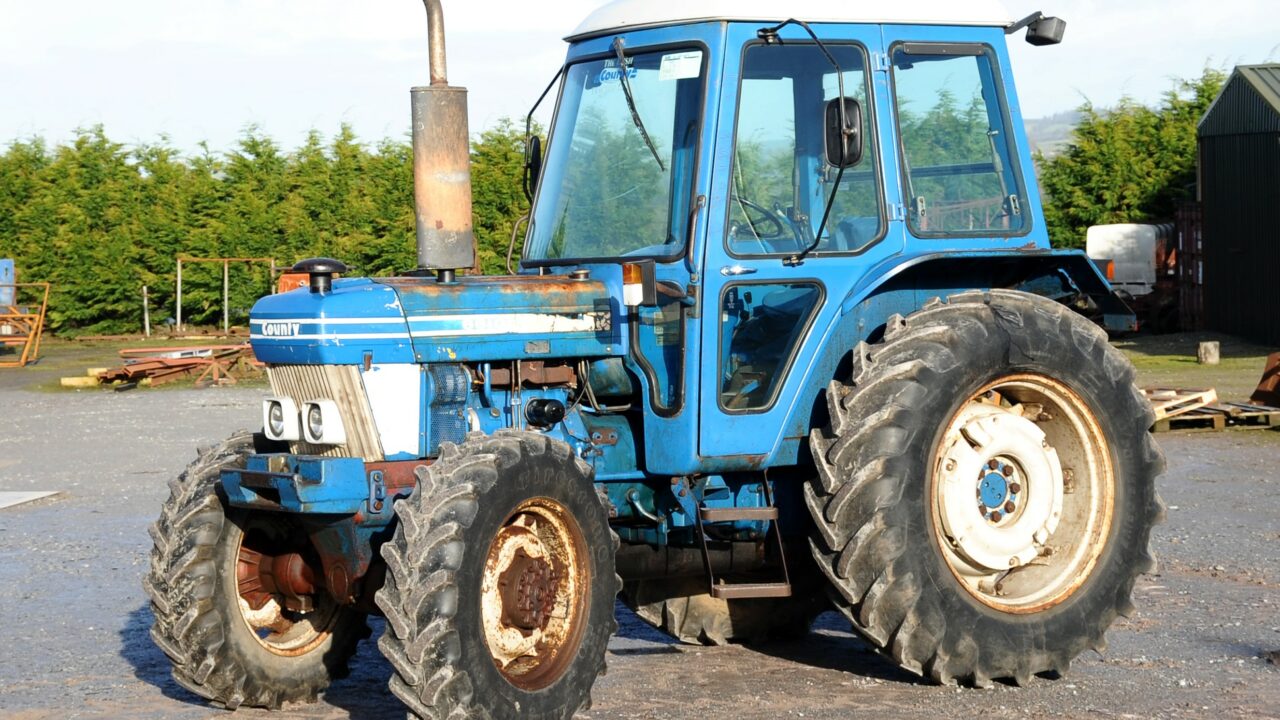The relationship between Ford and County Commercial Cars – a specialist in 4WD vehicle conversions – remains one of life’s minor puzzles.
2WD had long been recognised by many European manufacturers as often being inadequate for European conditions. Traction aids were always being experimented with – usually in the form of tracks. However, Ford itself showed little interest in pursuing the idea.
It is true that the Canadian Massey Harris company had introduced a 4WD machine as far back as 1930. However, the idea did not take root and it was left to European manufacturers to develop the idea as an integral part of a tractor’s design after the second world war.
MAN, for example, was a pioneer in this field – fitting a powered front axle to a tractor of ‘standard format’. However, the more common approach to all-wheel drive was to create a multi-purpose vehicle – such as the Mercedes-Benz Unimog.
Anglo-American companies were much slower on the uptake; they tended to leave the fitting of powered front axles to third-party suppliers like County Commercial Cars (or ‘County‘ as it became known).
By accident
County had fallen into the motor trade by accident, when two brothers – running a meat business – decided to increase the load-carrying capability of their Ford trucks by fitting a third (un-driven) axle. They were then asked to convert trucks for other hauliers; they established a new business to do so in 1929.
Within a few years they were supplying conversion kits to Ford itself; these kits were fitted to ‘standard’ trucks while still on the Dagenham production line. Thus began the association between the two companies, which was rekindled after the war when County took to fitting tracks to the Fordson E27 in 1948.
The first true 4WD conversion then appeared in 1954; though this was still a skid-steer unit. Despite relying on a crawler’s steering mechanism, this first model marked the beginning of Countys as we know them today.
Whether there was any sort of official contract, or even an unofficial agreement, between Ford and County (on sharing the market between them) is not known. However, Ford showed not the slightest interest in making a 4WD tractor while County predominantly used Ford skid-units for its product range.
It wasn’t until the late 1970s that this comfortable situation was challenged by two developments. The first was the inexorable rise in tractor horsepower; the second was the equally inexorable fall in unit sales.
While County had been happily converting Fords to 4WD, other engineering firms had been busily converting them into more powerful tractors – by mating redoubtable Ford E6 six-cylinder engines to Ford 5000 rear-ends.
100hp had became a perfectly reasonable proposition for many farmers. To make the most of that muscle, 4WD would be essential.
With the rise in power came a decline in the overall number of tractors required; Ford found itself unable to simply sell whatever happened to drop off the production line. It had to start thinking more intelligently about the market – rather than just shifting unit after unit.
Two considerations
These two considerations came together in the Ford TW series, which was launched in 1979. These were big, six-cylinder, 4WD tractors; County had the rug pulled from beneath it – now it was a matter of survival.
As part of that survival strategy, County fell back to converting smaller Fords to 4WD, one of which was the 78hp 6610 (pictured below).
It is believed that only five were completed – between 1981 and 1983. Of these five, three are known to still exist; one belongs to Jimmy Cotter (pictured below) of Ballinamult, Co. Waterford.
To convert these smaller tractors, County decided to abandon equal-sized wheels and turned to Carraro of Italy for a front axle. This was driven by a centrally-located propshaft, which took power from County’s own drop-box (attached to the transmission).
There was also a hefty new mounting block for the axle, which obviated the need for a stack of front-end weights (such was its sheer mass).
The cab would appear to be a standard Ford ‘Q cab’, but closer inspection reveals that it has a curved panel on the left-hand side, just in front of the clutch pedal. This denotes it as a ‘genuine’ County cab; it was made that way to accommodate an extra hydraulic pump on the larger models. The feature was carried over to all the conversions.
Jimmy’s example was built in late 1982 and is therefore one of the last Countys built by the original company – it went into receivership just a few months later (although limited production continued until 1990 under two further, separate owners).
With 7,000 hours showing, this tractor is kept very much in its original condition. The engine has been reconditioned but there are no plans for a full restoration.
Jimmy, who is the technical officer for the Irish County Tractor Club, wants to maintain it as a working tractor rather than a museum piece – so he keeps it clean and in fine fettle in his usual, thorough way.
It may appear a little tired around the edges, but don’t be fooled; it is in tip-top mechanical condition.
The tractor spent its working life in the UK and it was a desire to have something different that brought it to Jimmy’s attention. He purchased it from an English collector in June 2016; he will continue to show it at various events around Ireland.
For aficionados of Ford tractors and their derivatives, it is well worth watching out for.











